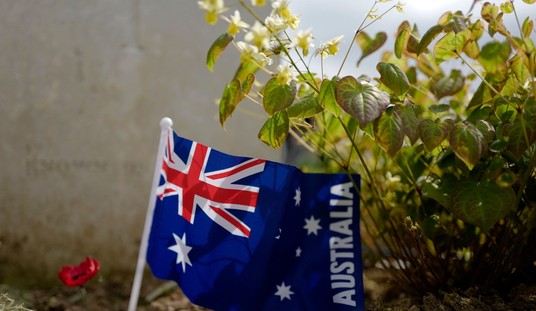Reassuring, but there’s a caveat. Isn’t there always?
Nuclear “remains a part of the president’s overall energy plan,” White House press secretary Jay Carney said at a briefing also attended by Nuclear Regulatory Commission Chairman Gregory Jaczko and Deputy Energy Secretary Daniel Poneman.
Carney deflected questions on whether President Barack Obama would support Connecticut Sen. Joe Lieberman’s call for a freeze on permitting of new U.S. nuclear power plants until more was known about the causes of the Japanese problems…
Jaczko added that given the large distances involved, it’s “very unlikely” that harmful radiation from Japan will make its way to Hawaii or the West Coast.
We’ve had no fewer than four worthy pieces in Headlines over the past 18 hours explaining why the Fukushima crisis won’t be another Chernobyl. If you missed them last night and this morning, catch up now with Owen Matthews, William Tucker, William Saletan, and especially this widely-linked piece by Dr. Joseph Oehmen of MIT. In fact, even the stories today headlined by screaming warnings about possible meltdowns in all three damaged reactors at Fukushima tend to come with caveats like this:
International scientists say there are serious dangers but little risk of a catastrophe like the 1986 blast in Chernobyl, where there was no containment shells.
And, some analysts noted, the length of time since the nuclear crisis began indicates that the chemical reactions inside the reactor were not moving quickly toward a complete meltdown.
“We’re now into the fourth day. Whatever is happening in that core is taking a long time to unfold,” said Mark Hibbs, a senior associate at the nuclear policy program for the Carnegie Endowment for International Peace. “They’ve succeeded in prolonging the timeline of the accident sequence.”
Supposedly the fuel rods at reactor number two — the latest to reach crisis stage — are now (or were recently) completely exposed, increasing the risk of a meltdown. After a weekend spent reading confusing/contradictory/hysterical stories, my layman’s understanding of the situation is as follows. There’s been at least a partial meltdown of the fuel rods in one or more reactors; small amounts of cesium-137 and iodine-121 have been detected in the atmosphere as far as 60 miles away. But the only reason even small amounts of radiation have escaped is because technicians have had to occasionally vent the containment vessels in which the reactors are housed to keep the steam pressure inside from building. A Japanese nuclear official said today that “it’s impossible to say” whether any of the containment vessels have been damaged, but apparently none of them have been breached. If they had been, radiation levels near the plant would presumably be much higher than has been detected.
Am I right on all that, nuclear experts? If so, then as long as the containment vessels hold, even a complete meltdown should provide no significant health hazard to the population in Japan or anywhere else. They’ll have to go on venting small amounts of radioactive steam for months, but there won’t be any sort of massive release of radiation the way there was at Chernobyl. Which brings me to a question I haven’t seen answered reliably anywhere over the past few days: How sure are we that the containment vessels at Fukushima can contain a full meltdown? Two passages that caught my eye, the first from Sci Am quoting physicist Ken Bergeron:
“[O]ne of the disadvantages [at Fukushima] is that the containment structure is a lightbulb-shaped steel shell that’s only about 30 or 40 feet [nine to 12 meters] across—thick steel, but relatively small compared to large, dry containments like TMI [Three Mile Island]. And it doesn’t provide as much of an extra layer of defense from reactor accidents as containments like TMI [do]. So there is a great deal of concern that if the core does melt, the containment will not be able to survive. And if the containment doesn’t survive, we have a worst-case situation.”
And just what is that worst-case scenario? “They’re venting in order to keep the containment vessel from failing. But if a core melts, it will slump to the bottom of the reactor vessel, probably melt through the reactor vessel onto the containment floor. It’s likely to spread as a molten pool—like lava—to the edge of the steel shell and melt through. That would result in a containment failure in a matter of less than a day. It’s good that it’s got a better containment system than Chernobyl, but it’s not as strong as most of the reactors in this country.”
And another from Time:
Experts differ in their opinions on whether a large-scale radiation release can be avoided in Fukushima, as it was in Pennsylvania 32 years ago. Edward Lyman, a senior scientist at the U.S.-based Union of Concerned Scientists, cites a study by Sandia National Laboratories titled “Risk-Informed Assessment of Degraded Containment Vessels” that notes that the type of reactors at work at Fukushima are “unusually vulnerable to containment failure in the event of a core melt accident.” The most likely failure scenario, Lyman says, “involves the molten fuel burning through the reactor vessel, spilling onto the containment floor and spreading until it contacts and breeches the steel containment-vessel wall.” He acknowledges that it’s “not straightforward to interpret [the results of the Sandia study] in the context of the very complicated and uncertain situation at Fukushima. But they are a clear indication of a worrisome vulnerability of the [containment vessel] should the core completely melt and escape the reactor vessel.”
Oehmen’s analysis linked above seems to assume no risk of a breach in the containment vessel. His worst-case scenario is that they can’t get water to the core, the core fully melts down and forms a molten pool at the bottom of the vessel, and then eventually they get their cooling system back up and cool off that molten pool. Even if the molten core did melt through the vessel, it would fall into the graphite “core catcher” underneath, which would cool it off and prevent it from seeping into the ground or spreading in the environment. So there’s my question to anyone with the expertise to answer this: Is there really little risk of total containment breach here, assuming that they can keep venting steam to stop catastrophic pressure from building? Or, per the Time piece, are these 40-year-old reactors “unusually vulnerable”?
Here’s Jaczko at today’s WH briefing. If you’re wondering why Obama’s sticking with nuclear power even now, it’s because the left’s support for clean energy gives him plenty of cover.








Join the conversation as a VIP Member